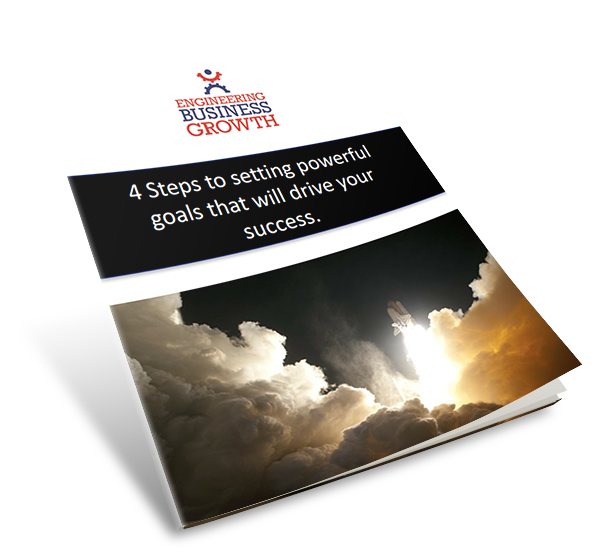“A journey of 1000 miles begins with a single step” Lao Tzu (Chinese Philosopher)
 The creation of a business can certainly seem like a 1000 mile journey. And on such a long journey there will be numerous challenges, distractions and re-routing. Amongst all of this one of the vital things is not to lose sight of the destination. Knowing where you’re aiming to get to continues to give your journey direction, so that when the distractions and re-routings come along, they don’t knock you off course entirely!
The creation of a business can certainly seem like a 1000 mile journey. And on such a long journey there will be numerous challenges, distractions and re-routing. Amongst all of this one of the vital things is not to lose sight of the destination. Knowing where you’re aiming to get to continues to give your journey direction, so that when the distractions and re-routings come along, they don’t knock you off course entirely!
In business we often call the destination a “vision.” A business vision is the picture that you have of your business when it’s fulfilling the ambition you have for it. The power of a vision is that it acts like a compass; with the clear picture of the destination giving you a steer on the direction you need to take when you come to key business decisions.
But if you don’t have a clear vision how do you develop one? Well we believe there are two primary things to get clear in your own mind before creating a vision. These are the business purpose and the business values.
 Purpose is defined in the dictionary as “the reason for which something is done or created or for which something exists.” So when we talk about the business purpose, we’re talking about the reasons that you’ve decided to start the particular business you’ve started. These could be many and varied. It could be you’ve decided to do it because you want to do something you enjoy, there could be financial motivators, there could be lifestyle motivators such as more time with family or more flexibility. More often than not it is a combination of factors.
Purpose is defined in the dictionary as “the reason for which something is done or created or for which something exists.” So when we talk about the business purpose, we’re talking about the reasons that you’ve decided to start the particular business you’ve started. These could be many and varied. It could be you’ve decided to do it because you want to do something you enjoy, there could be financial motivators, there could be lifestyle motivators such as more time with family or more flexibility. More often than not it is a combination of factors.
It’s important to be clear and honest with yourself about what these are, and which ones are the priorities vs which ones are the nice to haves, because these are the building blocks of your business vision. E.g. if the primary purpose is to be doing something you enjoy, you need to consider what role you would want to be in and what type of work you would want to be doing when your business achieves its vision, as this will inform your decisions as to what sort of additional staff to recruit as you grow and expand.
 The second element is values, which are defined as “principles or standards of behaviour; one’s judgement of what is important in life.” Being clear on your values is important because belief in the vision you are trying to create is so important for your motivation. If the business you are running fundamentally contravenes your own personal value set (the rules you live your life by) then its very hard to maintain motivation to keep going with it and motivate yourself or employees when times are hard; businesses should not be money at any cost.
The second element is values, which are defined as “principles or standards of behaviour; one’s judgement of what is important in life.” Being clear on your values is important because belief in the vision you are trying to create is so important for your motivation. If the business you are running fundamentally contravenes your own personal value set (the rules you live your life by) then its very hard to maintain motivation to keep going with it and motivate yourself or employees when times are hard; businesses should not be money at any cost.
Once you’re clear on the purpose for your business and the values you want it to adhere to, then you can start to shape an effective, motivating and guiding “vision” – a picture of the future you want to create that will give direction to where you’re going.
 Now visions can be as long term or short term as you want to make them. Some businesses have 2 year visions, some have 10 year visions, in Japan, visions are sometimes as long as 100 years! The challenge with this is, it can be difficult when you look at your vision, and you look at the here and now, to know what steps you need to take in order to move towards that future you’ve pictured for yourself.
Now visions can be as long term or short term as you want to make them. Some businesses have 2 year visions, some have 10 year visions, in Japan, visions are sometimes as long as 100 years! The challenge with this is, it can be difficult when you look at your vision, and you look at the here and now, to know what steps you need to take in order to move towards that future you’ve pictured for yourself.
That’s where SMART goals for the year come in. When you consider your long term vision, think about, in order to make progress towards it this year, what objectives would you set that you want to achieve? We would encourage you to consider this for all significant elements of the business individually, including Marketing, Sales, Operations, Finance and Talent.
 The best way is to usually start with the area that is most pressing to you (the one that immediately comes to mind), and once you’ve set the goal for that area think about what you would need to achieve in the other areas in order to reach the goal. Once you have a set of goals for the next 12 months, it becomes much more manageable to start to work out what you need to be doing now to move towards those goals.
The best way is to usually start with the area that is most pressing to you (the one that immediately comes to mind), and once you’ve set the goal for that area think about what you would need to achieve in the other areas in order to reach the goal. Once you have a set of goals for the next 12 months, it becomes much more manageable to start to work out what you need to be doing now to move towards those goals.
The other important thing is to make those goals SMART. Many of you will have heard this acronym and there are a number of slightly varying definitions but the ones we think are the most helpful combination are
S – specific,
M – measurable,
A – agreed upon,
R – realistic,
T – time-bound,
 The idea is that you are being specific about what you want to achieve, you can measure them so you know when you’ve got there, that they are not so far out of reach that they are unattainable which becomes counter productive as it is de-motivating, and that they are within a timescale so they do not run on ad infinitum, because there has to be a point at which you can say this is succeeding or not and we can all do with the pressure of a deadline to get us moving sometimes! By putting in place these specifics, this makes your goals tangible, it gives you something real to work towards and hold yourself to account on and ultimately because you’ve developed them from looking at your business vision you know they are driving you towards that vision.
The idea is that you are being specific about what you want to achieve, you can measure them so you know when you’ve got there, that they are not so far out of reach that they are unattainable which becomes counter productive as it is de-motivating, and that they are within a timescale so they do not run on ad infinitum, because there has to be a point at which you can say this is succeeding or not and we can all do with the pressure of a deadline to get us moving sometimes! By putting in place these specifics, this makes your goals tangible, it gives you something real to work towards and hold yourself to account on and ultimately because you’ve developed them from looking at your business vision you know they are driving you towards that vision.
So we’d really encourage you, if this isn’t your normal practice to spend some time getting clear on this this year. If you’d like some help with this process you can download our goal setting guide on the right.
We wish you all the best with your goal setting and success over the next year!


